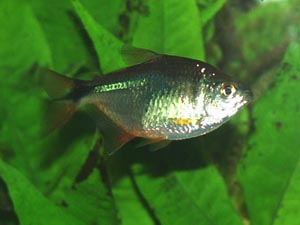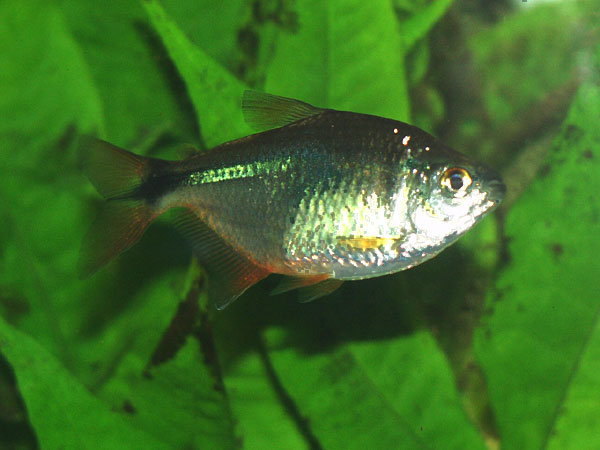

Species Profile | Images | Breeding Report | Similar Species

(Other members of the genus Hemigrammus)
ADULT SIZE: 7 cm
WATER CONDITIONS: Not critical
TEMPERATURE RANGE: 18-28 C
FOOD: Feed Hemigrammus caudovittatus live and dried foods
DISTRIBUTION: This species comes from Brazil, Argentina
AQUARIUM CARE: This is a very hardy species that will tolerate most conditions. Its main drawback is its ability to eat most aquarium plants. The only real exception is java fern which it will ignore. This species will thrive in a large tank, planted with java fern, and with rocks and wood as decoration. It is a good community fish, with fish of a similar size. It can be a fin nipper!
BREEDING: Prolific plant spawner. As most plants are eaten, spawning mops may be more appropriate. Ideal breeding temperature 22-24 deg C
Have you bred Hemigrammus caudovittatus? Why not fill in a breeding questionaire?, or examine existing Hemigrammus caudovittatus breeding reports
LINKS:
fishbase
Other members of the genus Hemigrammus
Other characin species

This species is a voracious plant eater, however it will not eat Java fern.
BREEDING: Prolific plant spawner. As most plants are eaten, spawning mops may be more appropriate. Ideal breeding temperature 22-24 deg C
Have you bred Hemigrammus caudovittatus? Why not fill in a breeding questionaire?
This page summarises breeding reports provided by visitors to this site, along with some statistical analysis. Please feel free to contribute - whatever your experience!
| |||||||||
|
| ||||||||
|
| ||||||||
| |||||||||
|
| ||||||||
Remember, each record represents only one persons experience; if you had different results, or used different methods, please share your experiences
| Water conditions: Very soft and acidic | Water temperature: 20-23oC |
| Disposition: Active, but not aggresive | Community tank?: Only with species of similar size |
| Spawning Method: Spawning Mops | Breeding problems: none |
| Sex ratio: Roughly equal | Breeding difficulty: Average |
| Sucess: Fairly sucessful | Years Experience: 3 |
| Other Comments: | |
| Date this record created: 23rd May 2012 | Breeding date: 2012 |
| Breeder: milan ivanovic | Location: serbia |